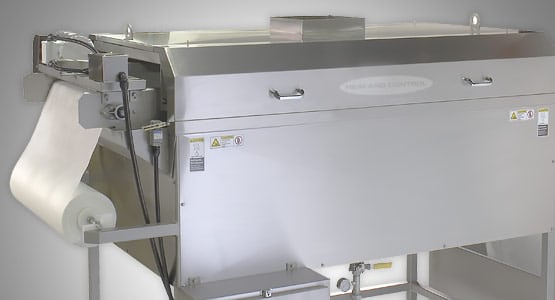Undersized dust collectors, differential pressure limiting production and overextended employees tied up with lengthy maintenance: The dust collection baghouse has no shortage of problems. Before scrapping a dust collection system and rebuilding expensive infrastructure, it is worth considering a simple filter swap to a pleated-style filter to address some of these headaches.
While pleated filters have a higher initial cost than bags and cages, operating cost savings can be significant over time in many applications. By packing three to four times more filter surface into a shorter package, pleated filters can often cost-effectively reduce dust emissions, pressure drop, and filter durability issues.
Certain pleated filter elements and cartridges have already solved these issues, saving downtime in food, pharmaceutical, wood, aluminum, power, cement, and other process industries, with gas temperatures ranging from -20 to 400°F. Application engineers can help assess individual applications and provide insight into whether the type of dust and performance parameters merit considering pleated filter options.
Compact Size Plus Increased Filtration Surface Area Lower Pressure Drop
Because the folded media of a pleated filter contains greater surface area than a bag of the same diameter and length, it reduces filtration velocity and, therefore, often lowers pressure drop across the filtration media. While this can result in lower energy bills, the real savings often come from increased production.
Strategic placement of pleated filters reduces can velocity. When can velocity is too high, it prevents dust from dropping off the filter during cleaning. Released dust remains suspended and re-adheres to the filter surface. Pleated elements can solve this problem by reducing the total number of filters without sacrificing total filtration area. This creates more open space between filters and therefore lowers can velocity.
Depending on filter diameter, a traditional filter bag could be replaced by a pleated filter of one-third the length and with the same filter area.
Better Durability Cuts Downtime
The filter length difference between bags and pleated-style filters also factors into filter wear and change-out frequency. If filter bags are wearing at the bottom, swapping them out for shorter pleated elements gets the filters out of the abrasion zone (see Figure 1). An additional benefit: Unlike filter bags, pleated filters have a protective urethane or metal end cap at their base that provides additional abrasion protection. This feature increases filter life.
Read more: Pleated Filters: The Great Problem Solver









